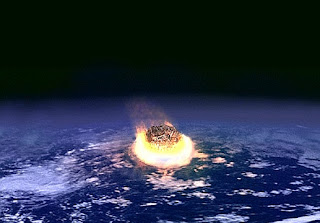The Big Five mass extinctions continued:
4. The Triassic-Jurassic extinction event - This extinction event occurred at the boundary between the Triassic and Jurassic periods, approximately 200 million years ago. It affected both life on land and in the sea, with twenty percent of all marine families being lost, and many on land as well. Animals affected on land include many therapsids, large reptiles (non-dinosaurian archosaurs), and large amphibians. The extinction of these large animals allowed for the dinosaurs to really evolve and take over the landscape, filling the ecological niches left open by the extinct animals. Like most other mass extinction events, the cause is not clear. Possible causes include climate change resulting in sea-level changes or ocean acidification, an asteroid impact, or large volcanic eruptions. Of all of the mass extinctions, the Triassic-Jurassic extinction event is probably ranked fifth in terms of extinction rate.
 |
| Smilosuchus was a phytosaur, a group of reptiles that went extinct in the end-Triassic extinction. Image from Wikimedia Commons user ArthurWeasley. |
 |
| Artists rendering of the bolide impact that likely caused the Cretaceous-Palaeogene extinction |
 |
| Large megafauna like the mammoths went extinct during the Quaternary. Image from Plos Biology credit Mauricio Anton. |
No comments:
Post a Comment